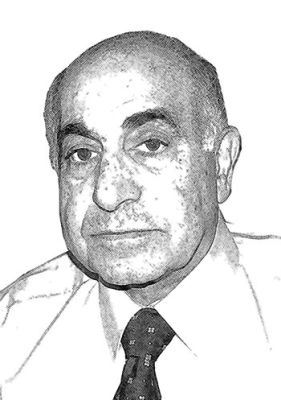When I first read about US President Donald Trump’s announcement that he will not block the publication of the last batch of secret government files on the assassination of president John F. Kennedy 50 years ago, I was puzzled.
JFK was shot in broad daylight in front of millions of people watching his procession as part of the live crowd or on TV.
A few days following the assassination, JFK’s killer, Lee Harvey Oswald, was shot dead by another killer, Jack Ruby, while in police custody.
Jack Ruby was arrested on the spot. Official investigation produced thousands of pages of investigation results used in the 888-page Warren Commission report.
Twenty-six other volumes of hearings and exhibits were published by the commission a few months after the report, including testimonies by more than 500 witnesses.
We are now being told that the final JFK files have been kept secret for reasons relating to national security.
This raises the big question: How can hiding any facts related to JFK’s assassination from the US public for so long protect national security?
Clearly it does, and only by viewing the contents of the yet-to-be-published files may one have an adequate explanation.
All states, without exception, keep secrets for periods of time that vary according to the importance of the protected files, with some remaining hidden indefinitely, whether by design or as a result of abnormal circumstances, such as wars of destruction.
It is hard to imagine how many important secrets may have perished in past times.
This is perhaps one of the most significant lessons of history: we only know part of the “truth”, but never the whole truth, and what we accept as truth may not be that accurate.
All throughout history, records have been corrected in light of new information that would surface in due course.
Historians update their data as a result of deeper examination of sources and exploration of newer facts. Often the final version is hard to reach.
Seeing past circumstances through modern-day communication and fact-recording facilities, it becomes harder to accept at face value any narrative of history.
If we still disagree on the basic circumstances of events that happen in broad daylight, in the presence of eyewitnesses and in front of cameras that record sound and picture and can replay the real happenings thousands of times for further examination afterwards, how can anyone expect to be able to determine the reality of events that happened in the distant past without much evidence to back them up or scrutinise them?
There are countless examples of major recent events that fall into this category. Agreements and consensus on how any of these events happened are rare, if ever possible.
One example is the September 11 attacks of 2001 on significant locations in the United States.
Millions witnessed the attacks on the New York towers as they happened on their TV screens. The facts were soon published about the hijackers and their plans.
Three years later, the 9/11 Commission report was published with all the details one could have imagined about that unprecedented terror attack.
As usual, some parts of the report were kept secret, again for national security considerations. But the point is that despite the painstaking details contained in more than 600 pages, the report failed to satisfy many people.
Conspiracy theories abound until this very day. Films were released and books were published promoting these conspiracy theories, and some architects questioned the validity of the official narrative by demanding explanations from the authorities regarding technical issues.
They provided analyses on how long it takes for steel to melt and the amount of heat needed to melt it to the degree that causes the collapse seen in the twin towers, implying that the impact of the two hijacked planes and the resulting fire could not cause such a rapid collapse.
But if in this case the controversy is based on assumptions, conspiracy theory and some human speculation, there are other outstanding examples of valid doubt. And there have been prominent cases in which a certain narrative was later corrected.
The importance of the past for the human race cannot be underestimated.
Continuity vital to our civilisation can only be maintained by knowing the past, however inadequately.
History is an integral whole that requires continuity. Obscure phases of our past cast dark shadows far beyond the related periods.
The problem is that it has always been difficult not only to uncover the distant past, but the recent as well; hence, the ongoing disagreements on the versions of events.
